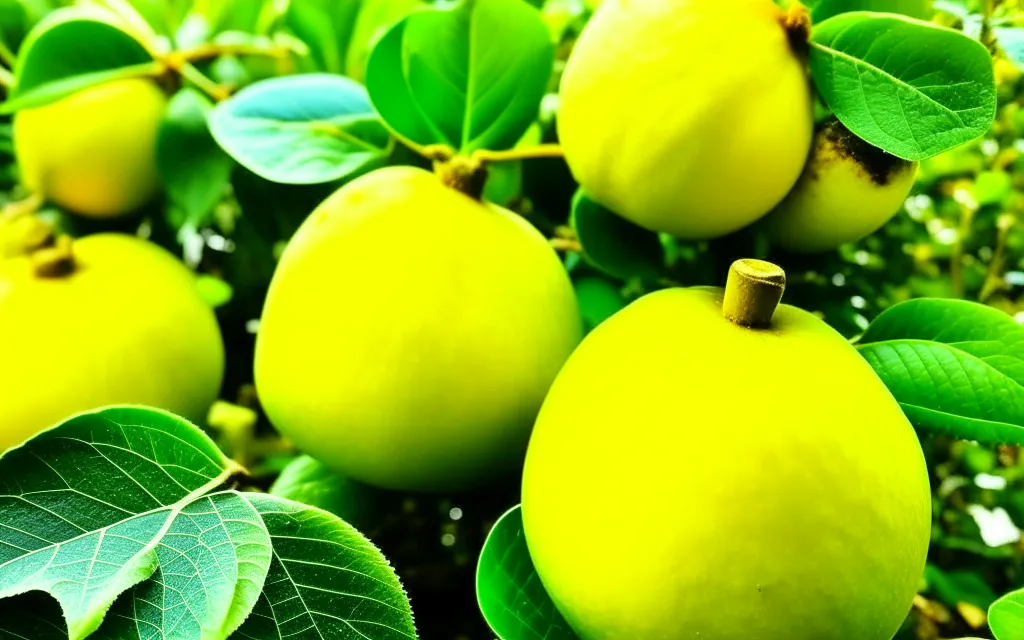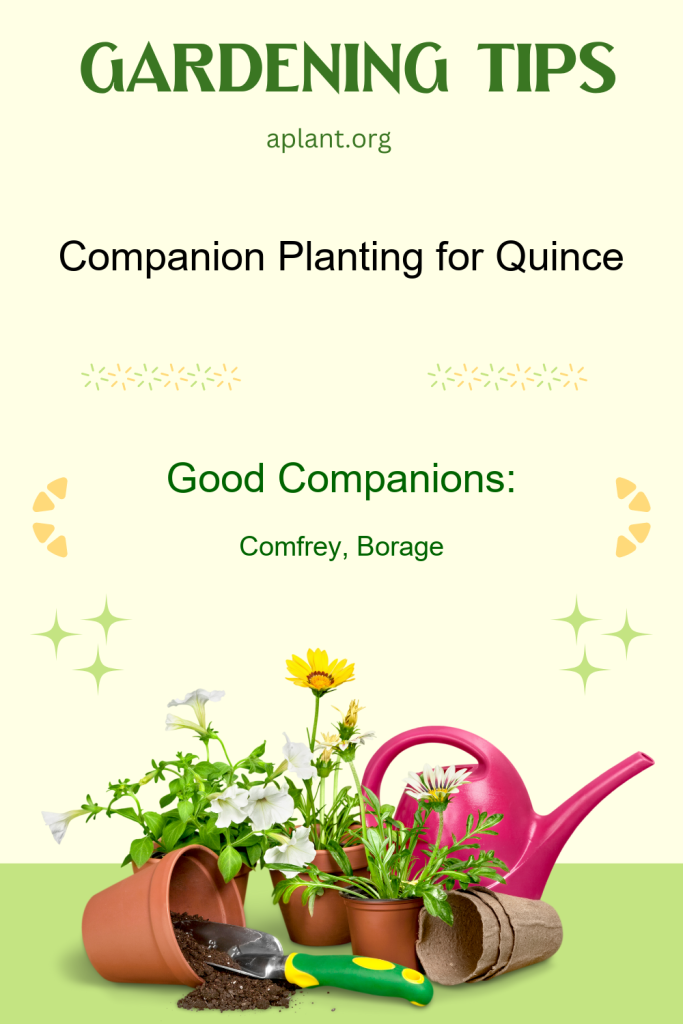
Quince, or Cydonia oblonga, is a beautiful deciduous tree that produces fragrant, yellow fruit. It might look a bit like an oversized pear, but let me tell you—its flavor is something all its own. Historically, quinces have been cherished since ancient times, popping up in culinary practices from the Mediterranean to Asia. Growing these lovely trees requires well-drained soil and plenty of sunshine; they thrive when you give ’em room to stretch out and spread their roots.
Now, if you fancy a more artistic approach to cultivation, you can grow quince vertically. Imagine a living wall of loveliness! Just be sure to train the branches to your desired shape and provide strong support as they grow. There are several varieties of quince you might consider, such as ‘Pineapple’ for its succulent fruit or ‘ Smyrna,’ known for its resistance to disease. Each variety offers something different, so take your time to explore.
The Benefits of Companion Planting for Quince
You might be wondering, “What’s this business about companion planting?” Well, it’s all about planting certain plants together to bring out the best in each other. When it comes to quince, companion planting can enhance growth, control pests, and improve fruit quality. Trust me, I’ve seen the difference it can make! It’s like having a garden buddy to help you thrive.

Good Companion Plants for Quince
Now, let’s delve into some fantastic companion plants for your quince.
Comfrey
Ah, comfrey! This hardy perennial has a long history dating back to the Middle Ages. It’s known for its incredible ability to accumulate nutrients from the soil, which can be beneficial for your quince. Comfrey leaves are rich in potassium, making them a natural fertilizer. Just simply chop and drop those leaves around your quince, and watch it thrive! Moreover, comfrey is an excellent insect attractor, drawing in pollinators and beneficial insects.
Borage
Borage, with its stunning blue star-shaped flowers, isn’t just easy on the eyes. This plant also boasts a legendary history in traditional medicine and gardening. Borage can enhance the growth and flavor of your quince while also warding off pesky cucumber beetles and other potential nuisances. Plus, it’s said to attract bees—what’s not to love about that? You’ll want to space borage about a foot away from your quince to give both plants enough room to thrive without competing.
Summary of Splendid Companion Plants
So, here’s a quick recap: Comfrey and Borage are two mighty companions for your quince. Comfrey is a nutrient powerhouse, while borage attracts beneficial pollinators. Make sure to plant them about a foot away from the base of your quince tree to prevent overcrowding and ensure each plant has enough access to light and nutrients.
Now, I mentioned something earlier that’s a bit of a rarity in the gardening world: there are no known plants to avoid when growing quince! Isn’t that refreshing? While it’s wise to keep competing root systems at a respectful distance, you can get a bit creative with companion planting.
With the right knowledge and care, your quince tree will become a star of your garden! So, grab your gardening gloves, plant those companions, and enjoy the bountiful harvest that awaits you. Happy planting!
Planting Guidelines for Companion Plants to Quince
When it comes to planting Quince, having the right companions can make all the difference. I’ve had my fair share of experimenting with different plants, and I’ve learned that spacing is crucial for a healthy garden. So, let’s dig into the specific spacing recommendations for companion plants to Quince!
General Spacing Rule for Comfrey and Borage
For both Comfrey and Borage, a general spacing guideline is about 2 to 3 feet away from Quince. This allows them ample room to spread their roots and foliage without crowding the Quince. Comfrey and Borage are excellent nitrogen fixers and attract beneficial insects, making them lovely companions.
Guidelines for Tall Companions
If you’re considering tall companions, aim for a distance of 3 to 4 feet from the base of the Quince tree. This distance ensures that taller plants won’t overshadow your Quince. Tall companions can benefit from the extra light while still letting your Quince bask in the sun.
– **Examples:** Sunflowers, and Corn.
Guidelines for Low-Growing Companions
Low-growing companions will typically need to be placed within 1 to 2 feet from the Quince. These plants can thrive in the partial shade created by the Quince canopy while also keeping weeds at bay.
– **Examples:** Strawberries, and Thyme.
Guidelines for Strongly Aromatic Companions
Strongly aromatic plants can be planted 2 to 3 feet away from your Quince, as their scents can repel pests and attract pollinators. Plus, they add a delightful fragrance to your garden!
– **Examples:** Lavender, and Rosemary.
Guidelines for Nutrient-Heavy Feeders
For nutrient-heavy feeders, I recommend a spacing of about 2 to 4 feet from Quince. These plants will benefit from the nutrients available in the surrounding soil but won’t compete too harshly with your Quince tree.
– **Examples:** Cabbage, and Peppers.
Guidelines for Spreading or Vining Companions
Spreading or vining companions need a bit more room. Aim for a distance of about 3 to 5 feet away from Quince, depending on how aggressive the spreader is. This way, they won’t choke out your Quince.
– **Examples:** Zucchini, and Cucumbers.
Tip for Adjusting Spacing
Remember, these are general guidelines! It’s always wise to adjust based on your specific garden conditions and the mature sizes of your chosen plants. For instance, if you notice that a particular variety tends to spread more in your garden, it might be worth giving it a wider berth!
Summary of Companion Plants
Comfrey
Comfrey is a powerful plant known for its ability to accumulate and store nutrients. Besides being a great companion for Quince, it pairs well with tomatoes and potatoes. Comfrey’s broad leaves can also be used as mulch to suppress weeds and keep the moisture in—such a versatile plant!
Borage
Borage, with its striking blue flowers, is not only a beautiful addition to the garden but also a fantastic companion for Quince. It attracts pollinators and can even be planted alongside strawberries and cucumbers. Its leaves are edible, too, adding a refreshing cucumber-like taste to salads!
So there you have it! With these guidelines, you’re well on your way to creating a thriving garden full of life and productivity around your Quince. Happy planting!

Leave a Reply